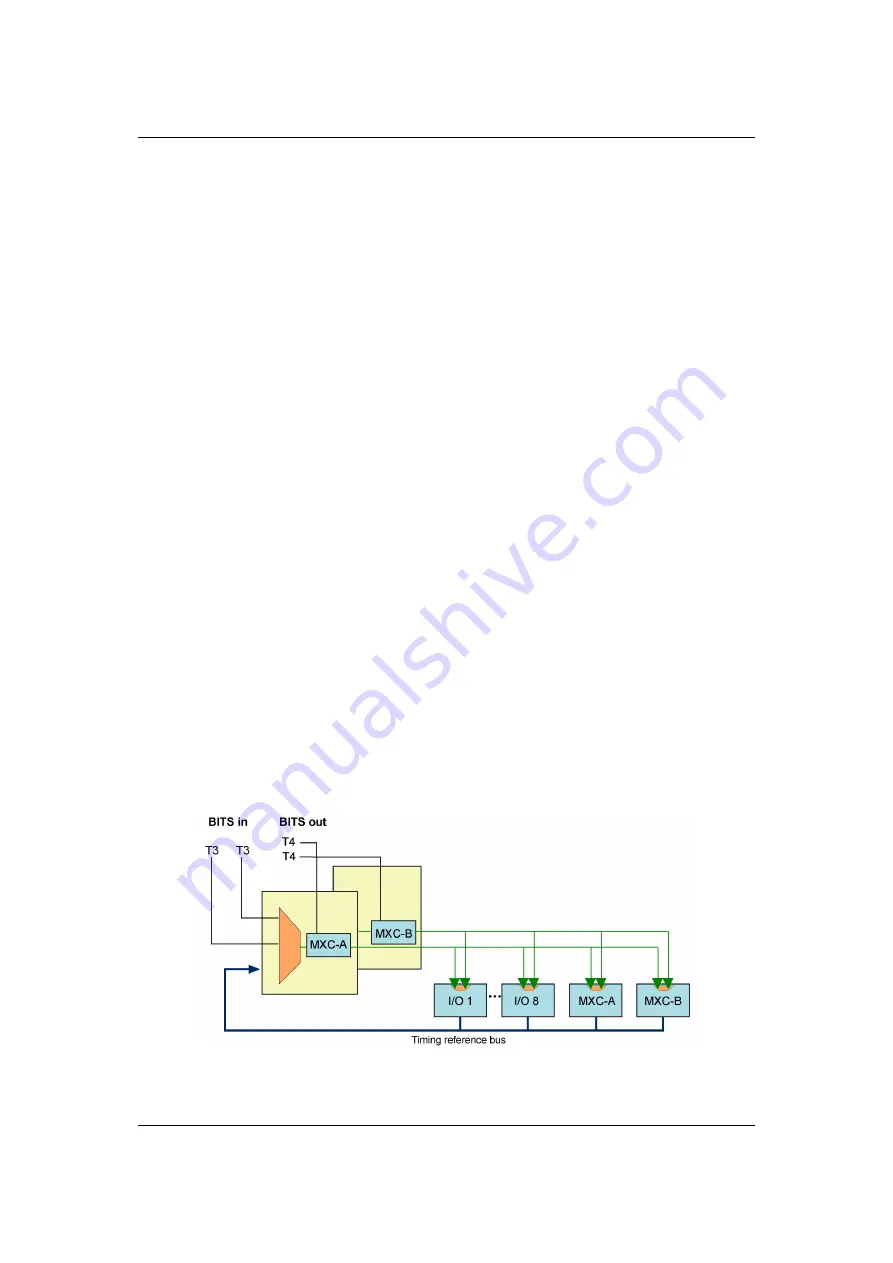
XDM® -100
System Design
417006-2005-013-A02
ECI Telecom Ltd. Proprietary
4-5
The TMU provides direct control over the source selection (received from the
system software) and the frequency control loop. The definition of the
synchronization source depends on the source quality and on the synchronization
mode according to network timing topology (set by the remote eNM LightSoft™).
Synchronization references are classified at any given time according to a predefined
priority and prevailing signal quality. The XDM-100 synchronization subsystem
synchronizes to the best available timing source using the Synchronization Status
Marker (SSM) protocol. The TMU, a Temperature Compensated Voltage Controlled
Crystal Oscillator (TVCXO), is frequency-locked to this source, providing internal
system and SDH/SONET line-transmission timing. The XDM-100 is synchronized
to this central timing source.
The XDM-100 provides synchronization outputs for synchronization of external
equipment within the exchange. There are two external E4/BITS out interfaces,
which can provide 2 MHz, 2 Mbps, or 1.544 Mbps external timing, as required.
These outputs can be used to synchronize any peripheral equipment or switch.
The operator can remotely manage network synchronization using the EMS-XDM,
and can select and determine the priority of each XDM-100 timing source reference.
These sources can include any external reference clock, PDH/Async line signal,
SDH/SONET line signal or internal clock, as described previously. In addition,
eNM LightSoft can be used to define overall network synchronization, network
synchronization maps, and alternative synchronization maps for different
contingency events.
The XDM-100 supplies a 4.6 ppm stable holdover mode when all alternative
synchronization sources are temporarily unavailable. The platform’s default clock
accuracy complies with applicable ITU-T and Telcordia standards at the network
level. Optional G.812 or G.811 synchronization quality can be provided using
additional external units.
Figure
4-2: Timing distribution block diagram
Summary of Contents for XDM-100
Page 1: ...XDM 100 Miniature MSPP for Metro Access and Cellular Networks General Description ...
Page 3: ...XDM 100 ...
Page 8: ...Contents XDM 100 iv ECI Telecom Ltd Proprietary 417006 2005 013 A02 ...
Page 10: ...Contents XDM 100 vi ECI Telecom Ltd Proprietary 417006 2005 013 A02 ...
Page 12: ...Contents XDM 100 viii ECI Telecom Ltd Proprietary 417006 2005 013 A02 ...
Page 16: ...Introduction XDM 100 1 4 ECI Telecom Ltd Proprietary 417006 2005 013 A02 ...
Page 22: ...Applications XDM 100 2 6 ECI Telecom Ltd Proprietary 417006 2005 013 A02 ...
Page 30: ...System Characteristics XDM 100 3 8 ECI Telecom Ltd Proprietary 417006 2005 013 A02 ...
Page 44: ...System Design XDM 100 4 14 ECI Telecom Ltd Proprietary 417006 2005 013 A02 ...
Page 82: ...XDM 100H XDM 100 8 8 ECI Telecom Ltd Proprietary 417006 2005 013 A02 ...
Page 94: ...Glossary XDM 100 B 6 ECI Telecom Ltd Proprietary 417006 2005 013 A02 ...
Page 98: ...Index XDM 100 I 4 ECI Telecom Ltd Proprietary 417006 2005 013 A02 ...















































